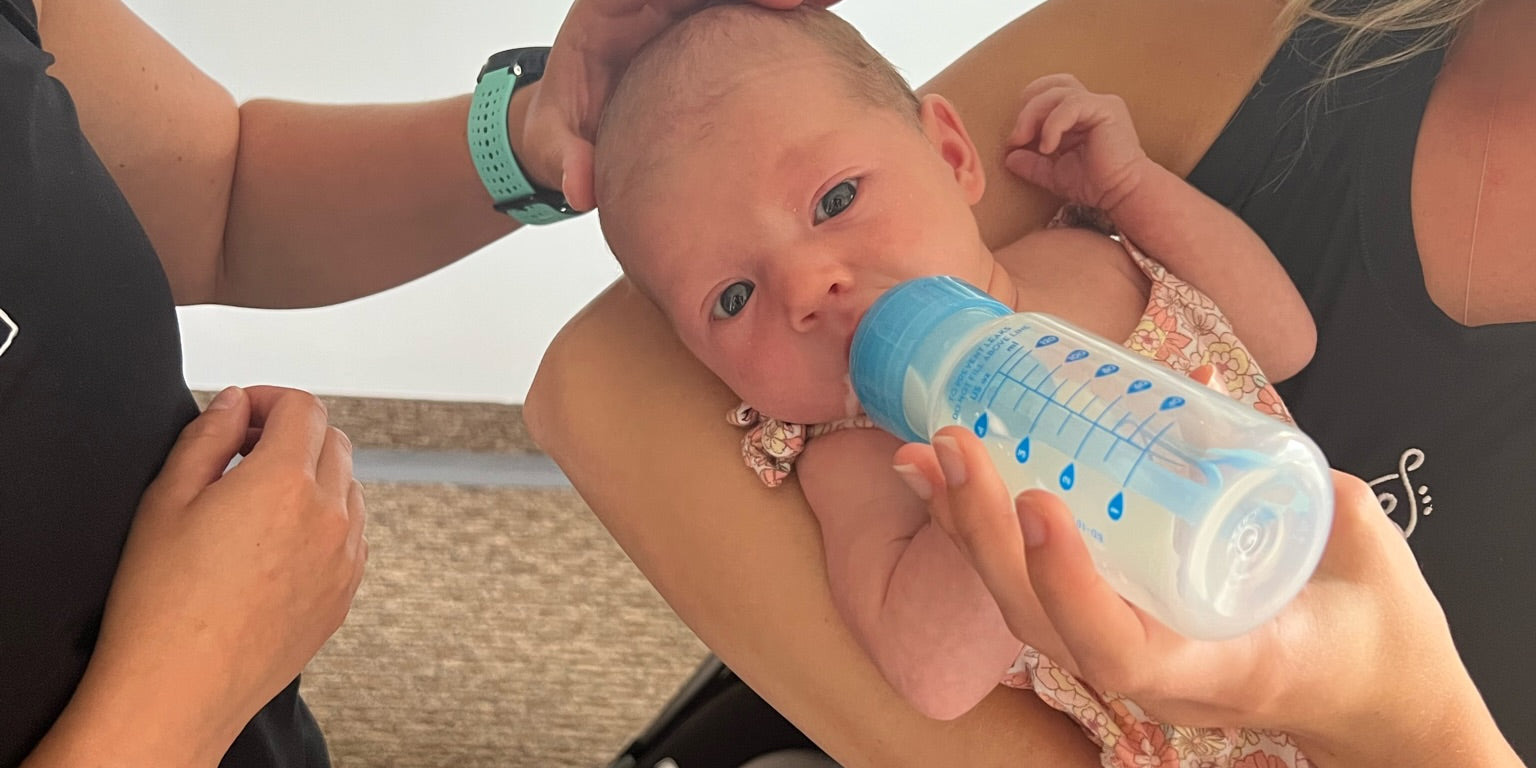Many babies suffer from digestive issues, a common one being acid reflux/excess spit-up. Pediatric chiropractic uses gentle adjustments and soft tissue work to safely treat your little and provide relief! Find out about how a chiropractor can help with infant reflux and learn some at home tips you can do yourself.
Infant Reflux:
Infant reflux is one of the most common conditions we see as pediatric chiropractors. Reflux occurs when the sphincter/valve between your esophagus and stomach isn't functioning properly. This allows contents of the stomach to come back up. In newborns and infants, it makes sense that this sphincter may not be functioning optimally ~ it is underdeveloped and new to its job. However, fussiness after feeding, excessive spit up, burping, or colic-like symptoms that regularly occur after feeding is most likely reflux.
Common Infant Reflux Symptoms:
- Arching/Extension of the back after feedings
- Coughing, gagging
- Poor eating
- Irritability after feedings
- Poor weight gain / weight loss
- Forceful / frequent vomiting
- Redness in the face
The Role of Chiropractic Adjustments for Reflux during Infancy:
With a misaligned spine, there can be compression or pinching of the nerves that connect to the spinal column. Some of these nerves travel to our digestive organs with instructions from the brain on how, when, and what to digest. With that being said, when these messengers (nerves) are compressed, they aren't able to get the message to the organs correctly. Correcting these misalignments can provide GI relief. With infants, our adjustments are incredibly gentle! Our touch is similar to pressure you use when checking the ripeness of an avocado! In our pediatric chiropractic clinic, we also spend time on body work techniques that improve reflux symptoms [more on this below!] Seeing a specialty chiropractor for infant reflux can also help find the true root cause of your babes symptoms, such as tongue ties.

Interested in photos like the ones featured in this post? We work with Megan Norman, a Minnesota-based family and newborn photographer with incredible talent.
At Home Tips for Reflux:
- Avoid overfeeding : try smaller, more frequent feedings
- Burp during feedings + after
- Incorporate body work before feedings and throughout the day
- Hold / keep your child upright for 20- 30 minutes after feeding
- Eliminate dairy + gluten products as milk intolerances can mimic / aggravate all signs and symptoms of GERD
- Start an infant probiotic [especially for formula fed babies]: we like Klaire Labs Infant Probiotic, Mary Ruth's Liquid Probiotic,
- Increase tummy time frequency and duration per babes comfort
- Consult your doc about adding rice cereal to bottles
The Diaphragm & Reflux:
One component we work on with kidz struggling with reflux is the diaphragm. The diaphragm is our breathing muscle [ in addition to having other roles ]. As you can see depicted below, the diaphragm connects to the lower thoracic spine and is very closely related to the esophagus and stomach. Relaxing and stretching the diaphragm can help release any tension that is being held on these structures.

Infant Diaphragm Stretch:
- Hold babe in a football hold, so their left side [stomach side] is down.
- Using your fingers with gentle pressure - find the sternum in the center of the chest and follow the rib cage down and out
- Use this stretch throughout the day and after feedings. Wait 20-30 minutes after babe eats to avoid spitting up.
Importance of Tummy Time
Tummy time is the common phrase used to describe the time that an infant spends on their belly! You can start practicing 'tummy time' as soon as you get home from the hospital. Early in babes life, this may simply be them resting vertically on your chest. Tummy time builds head control along with neck and upper body strength & coordination. Postural control and development is key in all infants. Prone play or tummy time is one of the main ways to encourage spontaneous movements while learning to handle the effects of gravity.
What does tummy time have to do with infant reflux?
Tummy time is essential for babies neurodevelopment and oral feeding skills. The body movements, weight shifts, and head control, all contribute to oral function. Without proper head control ~ neck strength, endurance, and coordination ~ infants aren't able to feed optimally and may start consuming air while feeding. Consuming air can result in infant reflux, gas, and colic. Keep in mind that babes with ties (tongue or lip) classically have a more difficult time with tummy time due to this head, neck and mouth connection.
Tummy Time Alternatives for Infants with Reflux
This video demonstrates tummy time alternatives for your babe! Utilizing these alternatives can be a saving grace for babes that hate tummy time! Learn how to use your birthing/exercise ball for tummy time. This tip and the other alternatives we share can be great ways to incorporate tummy time, even with infant reflux. They will enjoy tummy time more if they are at an incline and on a softer surface than the floor.
Each child is unique and so is their GI system. Although these infant reflux tips can help at home, it can be beneficial to have your child evaluated for specific care recommendations by a chiropractor for infant reflux! Our pediatric specialists will adjust any involved segments of the spine that could be hindering your child's ability to digest + you'll be given individualized tips for help at home!

This post includes affiliate links. We make a small commission for products purchased using these links (at no additional cost to you). Thank you for supporting Chiro for Moms/Chiro for Kidz, and making the content you see on this blog possible.


